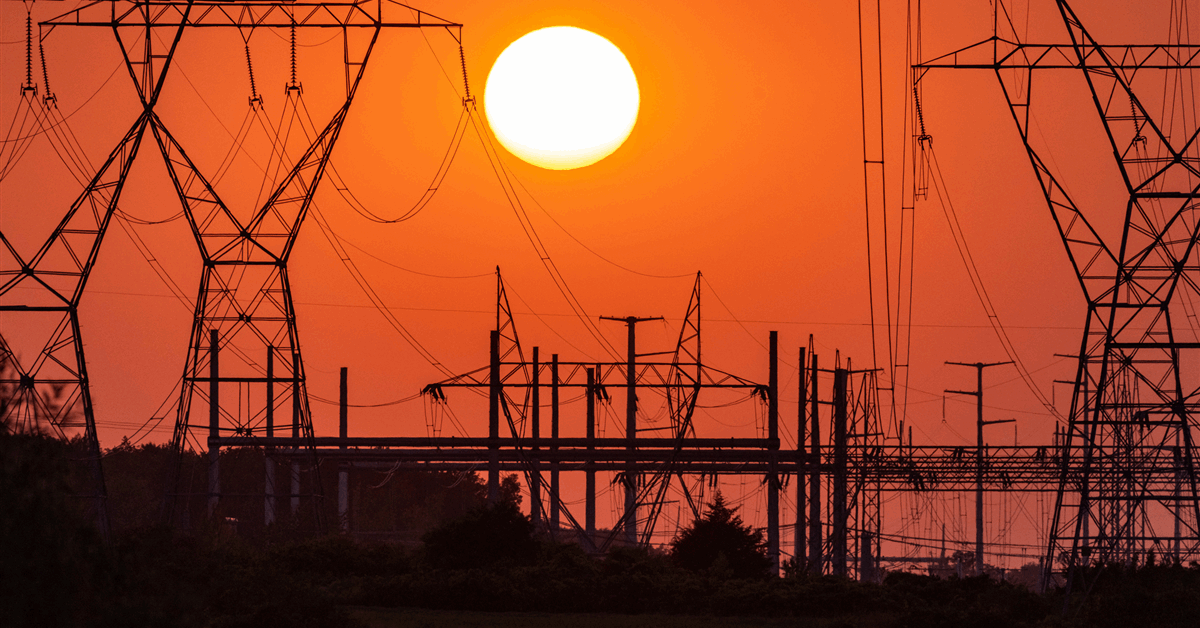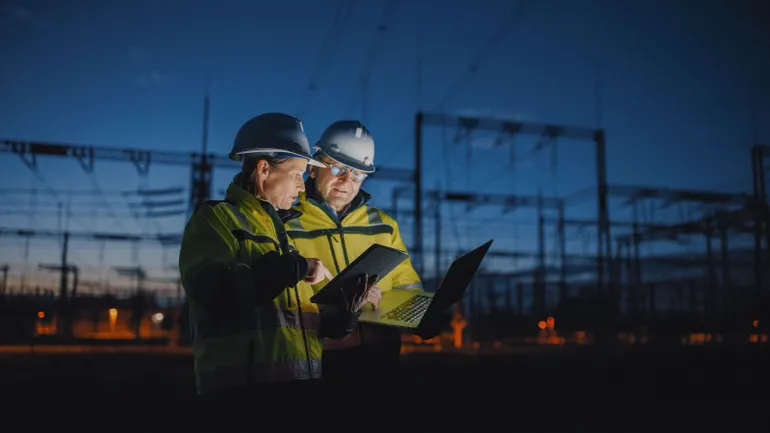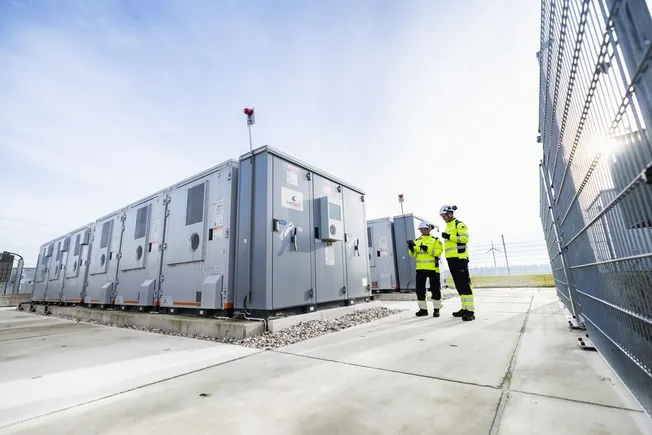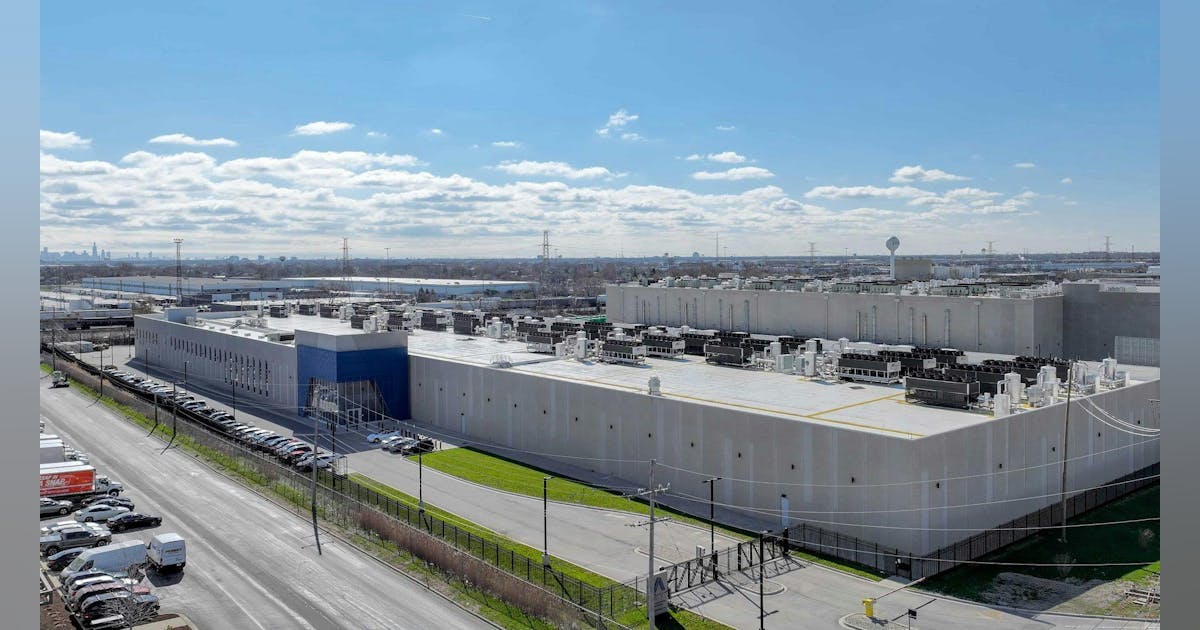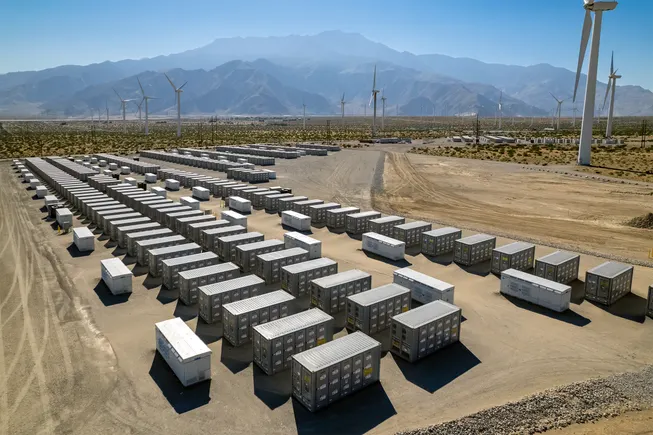
In an era of rapid technological advancement and increasing reliance on renewable energy, battery energy storage systems (BESS) are emerging as pivotal players in enhancing grid reliability. They bridge the gap between energy supply and demand while addressing the intermittency challenges inherent in solar and wind power.
By harnessing innovations such as long-duration storage solutions and advanced chemistries, emerging battery technologies are redefining energy management and paving the way for a more sustainable future.
All about that BESS
A battery energy storage system is an advanced technology designed to store and dispatch energy on demand. It functions much like a large rechargeable battery, capable of capturing excess energy generated during low-demand periods and releasing it when demand peaks.
These systems currently play a critical role in balancing the grid by compensating for the variable nature of renewable energy sources like solar and wind, which do not produce a consistent power output.
In practical terms, BESS can be deployed at various scales, from small residential setups to large utility-scale installations. They provide several valuable services to the grid, including peak shaving, load shifting, frequency regulation and backup power during outages.
Despite their numerous benefits, these systems face certain inefficiencies that the industry is actively working to overcome. One major challenge is the limited storage duration for current solutions. Most existing systems commonly offer two to four hours of storage capacity, with renewable developers often pushing for six- to ten-hour systems. However, the high capital expenditure makes it difficult to justify the use case for ten-hour duration. This limits the ability of these systems to fully compensate for prolonged periods of low renewable generation or unexpected surges in demand.
Additionally, the rapid growth of renewable energy sources causes transmission infrastructure to struggle to keep pace. This leads to congestion in areas with high energy demand and insufficient transmission capabilities. Because charging batteries adds to the energy load, installing BESS can be tricky in some of these areas. Often, the grid can’t handle the additional load. When studied, these projects sometimes fall apart because the required upgrades to the transmission system are too costly for the developer to take on.
New BESS practices
To address these inefficiencies, ongoing advancements focus on developing long-duration storage technologies and improving battery chemistries for better safety and environmental sustainability.
Long-duration energy storage
While traditional BESS are sufficient for short-term applications like peak shaving and frequency regulation, they often fall short in scenarios that require sustained power delivery over extended periods.
Long-duration energy storage solutions are being engineered with 12 to 100 hours of storage capacity, which is crucial in a world that is increasingly reliant on intermittent renewable sources.
Improved battery chemistries
Innovations in battery chemistry are reshaping expectations around performance, safety and environmental impact. Emerging solutions include:
- Sodium-ion batteries: Using abundant sodium instead of lithium or cobalt, these batteries offer a cost-effective alternative with reduced dependency on critical minerals. Additionally, they can use existing lithium-ion production infrastructure while avoiding the supply chain bottlenecks associated with rarer materials.
- Flow batteries: Composed of vanadium, zinc and iron, flow batteries boast an impressive lifespan of up to 30 years, making them ideal for utility-scale applications requiring durability and scalability. By increasing electrolyte tank sizes without the need to alter cell structures, their design allows for easy capacity expansion.
- Iron-air/metal-air batteries: These promising technologies are still in pilot stages but hold potential for long-duration storage using low-cost materials suitable for bulk shifting rather than fast regulation needs.
- Solid-state batteries: Though currently expensive due to manufacturing complexities, solid-state batteries offer higher energy densities. Once scaled, they could significantly reduce overall system costs. Electric vehicle manufacturers exploring future integration opportunities are particularly interested in this technology.
These advancements represent significant strides toward overcoming the limitations inherent within traditional lithium-ion setups. Moreover, they offer improved sustainability—from resource extraction to end-of-life recycling pathways.
Integrating smart grids
Smart grids use advanced digital technologies to improve the efficiency, reliability and sustainability of electrical services. They can enhance BESS capabilities through real-time monitoring and Internet of Things (IoT) integration. Sensors, advanced control algorithms, predictive analytics, smart meters and automation systems provide utilities with more detailed feedback that enables more effective use of BESS resources to better manage energy supply and demand.
Regulatory support
Regulatory frameworks will play a pivotal role in accelerating the adoption of advanced battery technologies and ensuring they effectively contribute to grid reliability and sustainability. For example:
- Streamlining interconnection procedures through standardized protocols would drastically reduce deployment timescales, allowing innovative battery technologies to come online faster.
- Fast-tracking pilot projects using “sandbox” regulatory frameworks will be vital in accelerating technological development and offering a controlled environment where novel chemistries can be tested without burdensome permitting processes.
- Aligning transmission policies with renewable build-outs ensures that storage systems are strategically sited to maximize their impact on grid reliability.
- Strengthening supply chain standards through domestic manufacturing credits could incentivize the production of alternative chemistries within local economies while reducing reliance on imported materials that often cause supply chain bottlenecks.
Fostering the future
Battery energy storage systems are not just ancillary components; they are central to a resilient future grid powered by renewables. As technological advancements continue, BESS solutions are becoming an indispensable asset in managing the dynamic demands of modern power networks.
However, unlocking their full potential requires strong regulatory support to create conducive market environments, streamline interconnection processes and foster innovation. By embracing these changes, we can pave the way for a more resilient and adaptive energy future.





